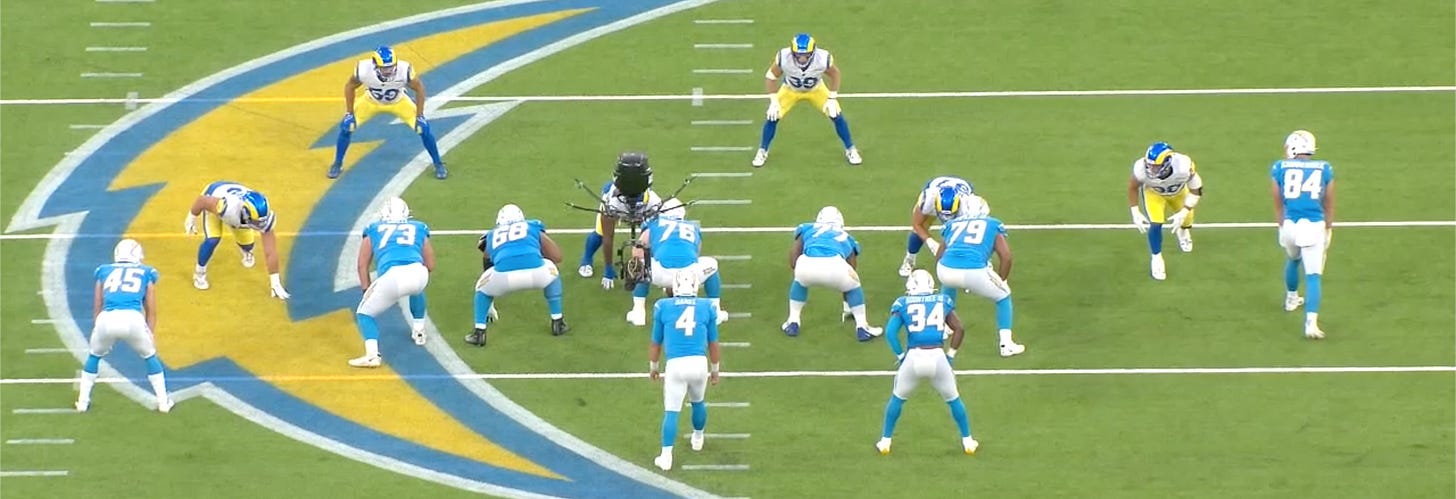Layering the Fit
Modern defenses are creating layers with their fluid fronts in order to combat the modern offensive juggernauts.
The preseason used to be when athletes “played into shape,” but with new CBA bylaws and massive contracts headed the players’ way, the preseason’s meaning has changed. I’ve personally never watched many preseason games, as they are more or less glorified scrimmages.
However, since more teams are opting to sit starters during the preseason and shifting to a dual-practice style where the starting 11 gets plenty of quality reps, the early games have been a way to evaluate younger players in a game setting. They are also a great way to see what a defense’s “base” will look like in Week 1.
When watching preseason games, one must take everything with a broader view. In this era of football, game plans for preseason games are all about getting reps and seeing players in certain situations. What the casual fan will see is basic, fundamental football.
Some players will stand out, while others will look overwhelmed. Again, the preseason is the time to evaluate talent. Natural scheme development is targeted during those dual practices.
Not all is lost when watching the preseason, though. The early stages of Fall Camp are a great way to see the foundational concepts of a team’s base. Therefore, when viewing preseason games, I am looking for techniques, basic schematics, and trends that will give insight into how teams will perform (and what they will run) come early September.
A football season is like a marathon, with changing scenarios and issues. What was popular one year may fall out of favor the next. What worked in Week 1 may not even be obtainable in Week 18. In its basic form, football is a game of attrition.
Injuries, performance, and momentum can all factor into scheme development during the regular season. An objective eye can view and learn more about football in the preseason because the game is running at a simpler pace, and there is much more teaching and evaluating.
Keep reading with a 7-day free trial
Subscribe to MatchQuarters by Cody Alexander to keep reading this post and get 7 days of free access to the full post archives.




